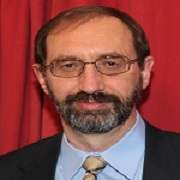
Branislav Vlahovic
NASA University Research Center, USAin
Title: Highly selective and sensitive biochemical detector for medical applications
Biography
Biography: Branislav Vlahovic
Abstract
We consider that novel biochemical sensor based on the charge transfer between detector’s semiconductor nanostructures and analyte molecules that will be detected. It is an original concept that relies on the tunneling between an analyte molecule and the discrete energy levels of the detector’s nanostructures. The energy levels in nanostructures, which depend on quantum confinement and external effects, are tailored to mimic the energy levels of the analyte to be detected. Charge tunneling between the detector’s nanostructures and the analyte will occur only if the analyte has the energy levels matching the energy levels of the detector’s nanostructures. This completely new concept for biochemical sensor, which leverages the unique properties of nanostructured materials and design and optimization of detector’s nanostructure’s, provides label free detection and identification of a wide range of analyses, with single molecule sensitivities. Such unique detection method allows for continuous, instantaneous real time, high selectivity, high sensitivity, miniature in situ characterization device that could be implemented for various medical applications. The sensor may be a standalone unit, or it can serve as a part of an instrument, enhancing selectivity and sensitivity of that device. Discussed will be modeling of the optoelectronic properties of nanoscale materials and QDs for realistic QD detector ensembles, including the study of collective effects on energy level spectra and charge transfer processes between nanostructures; its application for detection in fluids; and the production of the sensor components and the final prototype device in our nanotechnology laboratory

